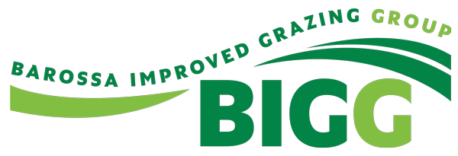From the Stock Journal
By CARLA WIESE-SMITH
MERINO breeders Ian and Fiona Koch are continuously searching for new ways to make their enterprise more profitable and sustainable.
And thanks to a study grant, the Kochs - who operate Bunyara Merino stud at Moculta - will head to the United States in October to further their research.
Made possible by the AW Howard Trust, which aims to promote and support pasture research, the trip will take in a visit to sustainable farming pioneer Gabe Brown in North Dakota and like-minded producers in the region, and a Savory Institute conference in San Francisco.
The Kochs first met Mr Brown in 2011 at an Angaston Agricultural Bureau forum and then travelled to St Louis, Missouri, to hear him speak at a no-till conference.
\"We were very inspired by his attitude to farming and what he produces,\" Mrs Koch said.
\"He has used various management tools to transform the farm to make it more productive and profitable.\"
It was clear to the Kochs they needed to alter the farming practices on their 1821 hectares of owned and leased land. They said using a highly artificial input system for the past 15 years had seen a rise in problems such as increasing soil acidity and pests and decreasing yields.
\"We were finding our pea yields were decreasing to a point where it was no longer economical to grow them,\"Mrs Koch said.
\"Our stubbles were taking longer to break down.
\"We are now measuring our soil microorganism levels; while fungi levels are acceptable bacterial levels are well below acceptable.
\"We are becoming concerned about our soil health and the balance of microorganisms as earth is the foundation block of our entire agricultural enterprise.\"
To improve their production and productivity, the Kochs are turning their attention back to the core element of their enterprise - the soil - rather than using reactive, \"quick fix\" solutions
which they say will ultimately become long-term problems.
\"We decided to try one step at a time,\" Mrs Koch said.
In 2012, they planted their first polyculture paddock.
\"We had a paddock with ryegrass resistance problems. Ryegrass is a good sheep feed so we could identify this problem and make it an advantage in our farm system,\" Mrs Koch said.
The Kochs did not want to reduce their cropping area, so they chose a paddock which for more than 10 years had only been grazed but was also arable.
\"We swapped the use of the paddocks - the cropping paddock became our grazing polyculture paddock - and we selected four grass-type species and six other legume based species,\" Mrs Koch
said.
\"We were very interested in looking at our animal health problems and seeing if we could help prevent them by diet rather than using supplements or intravenous minerals.\"
Through research and Barossa Improved Grazing Group activities, they discovered chicory grew well in SA and survived summer as a perennial plant. It is also high in zinc, magnesium,
manganese, calcium, iron, potassium, folic acid and various vitamins.
\"As well as aiding calcium absorption, the vitamins in particular are important over the summer months when there is little feed,\" Mrs Koch said.
In the past, the Kochs weaned their Merino lambs onto a sown pasture of oats and vetch, where they found the lambs would normally scour for a couple of weeks following introduction to the
pasture.
\"With the polyculture, we have had no scouring in the weaned lambs,\" Mrs Koch said.
In 2012-13, they had the worst drought in their region since 1982.
\"We weaned over 400 lambs on 36ha for four months which was really successful,\" Mrs Koch said.
\"In 2014-15 we missed growing a polyculture on this paddock but have since discovered it\'s better to plant every year.
\"We\'ve also found the sheep will graze different plants selectively depending on the plant growth stage which influences the palatability of the plant.\"
With concerns about increasing pest and damaging insect populations, the Kochs are also interested in investigating Mr Brown\'s theory on using a poultry or game bird element to decrease these numbers.
\"Gabe has adapted to work with nature,\" Mrs Koch said.
\"He introduced his poultry flock by observing the natural order of flocks of birds following bison on the (North American) plains and thought there must be a reason why they are doing this.\"
The Kochs have considered introducing guinea fowls to help clean up pastures rather than chemicals or burning off.
\"That way we can keep as much organic matter as possible,\" Mrs Koch said.
\"The guinea fowls won\'t become a pest, they don\'t damage crops and are less likely to fall victim to foxes.\"
During their US trip, the Kochs also hope to investigate the concept of farm direct sales for meat and egg, and how to utilise extra stubble.
\"As producers we\'ve got to acknowledge that people want to know more about Merino where their food is from and how it\'s produced,\" Mrs Koch said.
\"We know by changing even one practice at a time we start the first step of a journey to a better balance with our environment.\"
